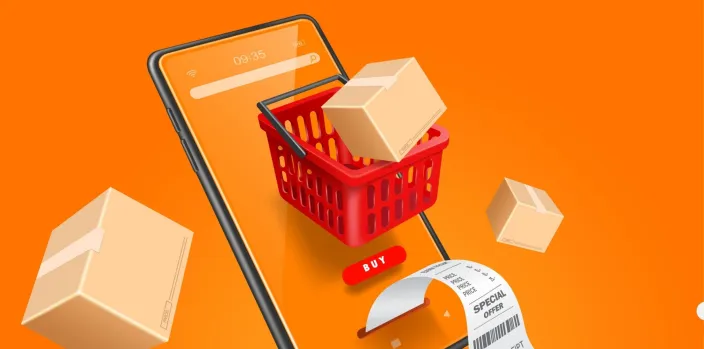
Time Is the New Currency
What is the price of impatience? More than we might think. We are present-biased consumers: we choose immediate benefits even when it would be more rational to wait (Bartels & Urminsky, 2011). Online, this tendency intensifies: just a few minutes of waiting can flip a choice (Hui, Thakor & Gill, 1998). In digital retail, time has become a currency: saving it wins more sales, repeat purchases and loyalty (Masuch et al., 2024; Harter et al., 2025).
E-commerce has turned instant gratification into a competitive standard. Amazon built its promise on it: first with Prime, then with same-day delivery, and soon with drones and robots designed to shrink waiting times to just minutes. In multi-seller marketplaces, speed is no longer a mere service feature: it is an implicit price factor that reshapes demand, margins and rankings. Whoever arrives first wins the customer.
In food delivery, time matters even more: the entire game is played in minutes. Deliveroo, Just Eat and Glovo compete on coverage and the stopwatch. Consumers constantly face a trade-off: a “good” pizza in 20 minutes or an “excellent” one in 45? More often than not, speed wins. Platforms know this and invest heavily to reduce waiting times — even tracking riders in real time and optimizing every move — strategies that work but raise ethical concerns about labor and surveillance.
A study to quantify the value of waiting time
Together with Elisa Montaguti, Federico Rossi and Chaewon Seol, I am conducting an ongoing study aimed at quantifying the value of impatience — that is, delivery time in digital commerce — and understanding how shorter waits reshape demand and market structure.
Our analysis leverages a unique natural setting: the launch of a food-delivery platform in an Italian city at a time when it was the only operator in the local market. We have geo-referenced data on orders, actual delivery times and customer-restaurant distances. Crucially, we observe a significant share of users who change addresses within the city during the observation period: when their “favorite restaurant” ends up a few kilometers farther after moving — while remaining available on the platform — the increased distance causes measurable changes in their choices. These moves, unrelated to price or quality changes, allow us to estimate precisely the effect of waiting time.
Preliminary evidence shows that:
- Each additional minute of waiting is worth about 15% of the order price for the average customer; the most impatient are willing to pay up to 70% more for faster deliveries.
- Proximity has long shielded many mediocre sellers: being close meant being chosen even without excellent quality.
We then asked: What happens if delivery times collapse thanks to new technologies like drones and robots?
Our simulations indicate that cutting waiting time by 75% doubles the market share of the best performers and threatens about one-third of existing players, especially in urban centers. Conversely, high-quality restaurants and stores located outside city centers suddenly become far more competitive.
Platforms can also monetize impatience: offering a priority delivery option that shortens waiting by 10% for a moderate fee can boost profits by about 30% and — paradoxically — even increase the wellbeing of the most impatient customers, who pay more but get what they value most: minutes saved.
Examples of this logic are already visible: Amazon charges extra for same-day delivery; Glovo and Deliveroo offer priority options; grocery services such as Instacart sell earlier delivery slots.
Implications for firms, cities and policy
These findings contribute to a broader debate on how technology is redefining competition (Goldfarb & Tucker, 2019) and concentrating markets by lowering search and transport costs (Kwon, Ma & Zimmermann, 2024).
In my research on digital shopping behavior, I have observed how integrating physical and online channels has transformed retailer profitability; today, the new competitive frontier is speed as a product attribute.
For companies, this means rethinking logistics as a strategic lever: segment customers by willingness to pay for speed, invest in reliability and service quality, and choose technology partners that can guarantee ever faster delivery.
For cities, it means preparing for a transformation of the retail landscape: if distance no longer matters, many neighborhood stores may lose their reason for being, with consequences for urban vitality and community life.
But the economy of impatience is not neutral. Ultrafast delivery raises ethical and social questions: working conditions for couriers, digital surveillance and the environmental footprint of ever-faster fleets. Businesses and policy makers will need to balance economic opportunity with social sustainability to avoid turning the race for speed into new forms of inequality or unsustainable pressure.
Ultimately, one question will guide consumer choices, business strategies and public policy:
How many minutes am I saving, what is it worth to me and how much am I willing to pay?
In a world where technology erases distance, only those who can turn speed into value and quality into true differentiation will thrive.

Commerce Never Sleeps
From market-supporting platforms to omnichannel strategies, from unified models to Chinese-led innovations, to the race against time in deliveries: Bocconi researchers and alumni discuss fast-paced change in the industry

